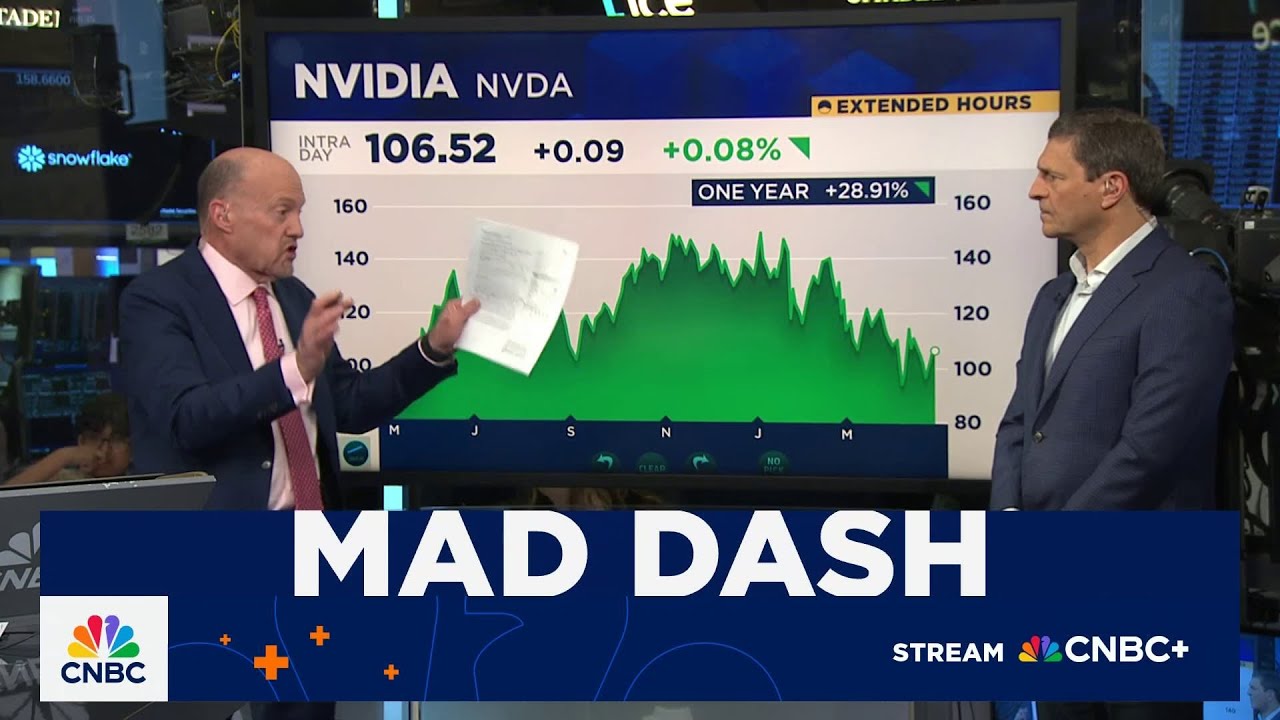In Cramer’s Mad Dash, the host discusses Nvidia’s current market situation, highlighting strong demand for its products despite a recent price target cut from Morgan Stanley and ongoing supply limitations, particularly with inference chips. While he remains optimistic about Nvidia’s recovery and holds a significant position in the company, he expresses caution about further investments due to potential regulatory changes and market uncertainties.
In the latest segment of Cramer’s Mad Dash, the discussion centers around Nvidia and its current market situation. The host notes that trading is about to begin for the day, and he acknowledges Arbor Day while expressing optimism about the upcoming week. He then dives into Nvidia, referencing a recent report from Morgan Stanley that has caused some confusion due to a cut in the company’s price target. Despite this, he emphasizes that there is a significant supply limitation, particularly a shortage of inference chips, which is impacting Nvidia’s ability to meet the soaring demand for GPUs.
The host highlights that in the past month, Nvidia’s business has accelerated, indicating a strong demand for its products. He connects this to comments made during a recent earnings call by Alphabet, where the company expressed confidence in its position regarding Nvidia and its technology. This suggests that Nvidia is regaining its prominence in the tech sector after a period of uncertainty, particularly following a downturn that had previously diminished interest in the stock.
Despite his long-standing support for Nvidia, the host expresses caution about buying more shares at this time. He references concerns regarding potential regulatory changes from the U.S. government, particularly regarding diffusion rules that could affect Nvidia’s operations in China. This uncertainty leads him to be more reserved about making additional investments in the company, even as demand for its products remains exceptionally high.
The conversation also touches on the host’s personal investment strategy, revealing that he still holds a significant position in Nvidia through his trust. However, he indicates that he has decided to trim his holdings rather than sell entirely, reflecting a cautious approach given the current market dynamics and regulatory uncertainties. This decision underscores the complexity of navigating investments in a rapidly changing tech landscape.
In conclusion, while the demand for Nvidia’s products is robust and the company is regaining traction, the host’s cautious stance highlights the importance of considering external factors, such as government regulations and supply chain issues, before making investment decisions. His insights reflect a blend of optimism about Nvidia’s future and a prudent approach to managing risk in the stock market.
